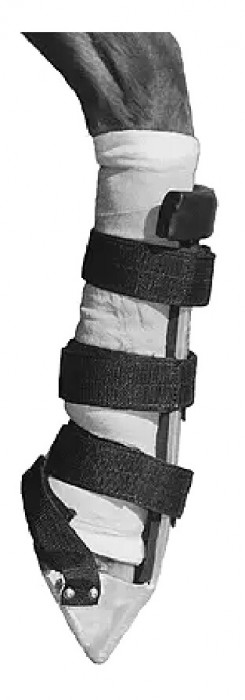
Injuries of the superficial digital flexor tendon
Superficial Digital Flexor tendon injuries caused by overstrain of the tendon are typically fairly mild and approximately 1 to 2 grades out of 5 at the trot on firm ground. Injuries caused by direct trauma are typically mild to moderately lame at the walk with acute tendon ruptures.
At the walk evaluation of fetlock angle gives information about the SDFT and the suspensory apparatus. If one of these structures is damaged it results in dropping of the fetlock (hyperextension of the MCP joint). Complete ruptures of the SDFT give significant dropping of the fetlock.
Coaptation
The choice of any form of coaptation depends on the level of support and mobility needed and the necessity to access a wound.
- Tendon ruptures greater than 50% of the tendon need coaptation in the form of cast or splint.
- Ruptures smaller than 50% with a wound require immobility to support healing of the skin and minimizing scar tissue.
- Complete tendon ruptures should be cast for 6 to 8 weeks. Up to 12 weeks the support should be reduced with for example a modified fetlock support shoe.
Casts
Casts provide the most ideal form of immobilization for repaired or healing flexor tendon ruptures.
Splints
The “fore-limb model Kimzey splint” is the most commonly applied commercial splint. It is designed as an emergency device for transport to a referral facility. It also provides access to the limb for the management of horses with wounds and tendon sheath injuries.
Support Shoes
If the SDFT is able to bear some weight but is still at risk of damage the fetlock support shoe can be an option.
> From: O’Sullivan, Clin Tech Equine Pract 6 (2007) 189-197. All rights reserved to Elsevier Inc.. Click here for the online summary.


